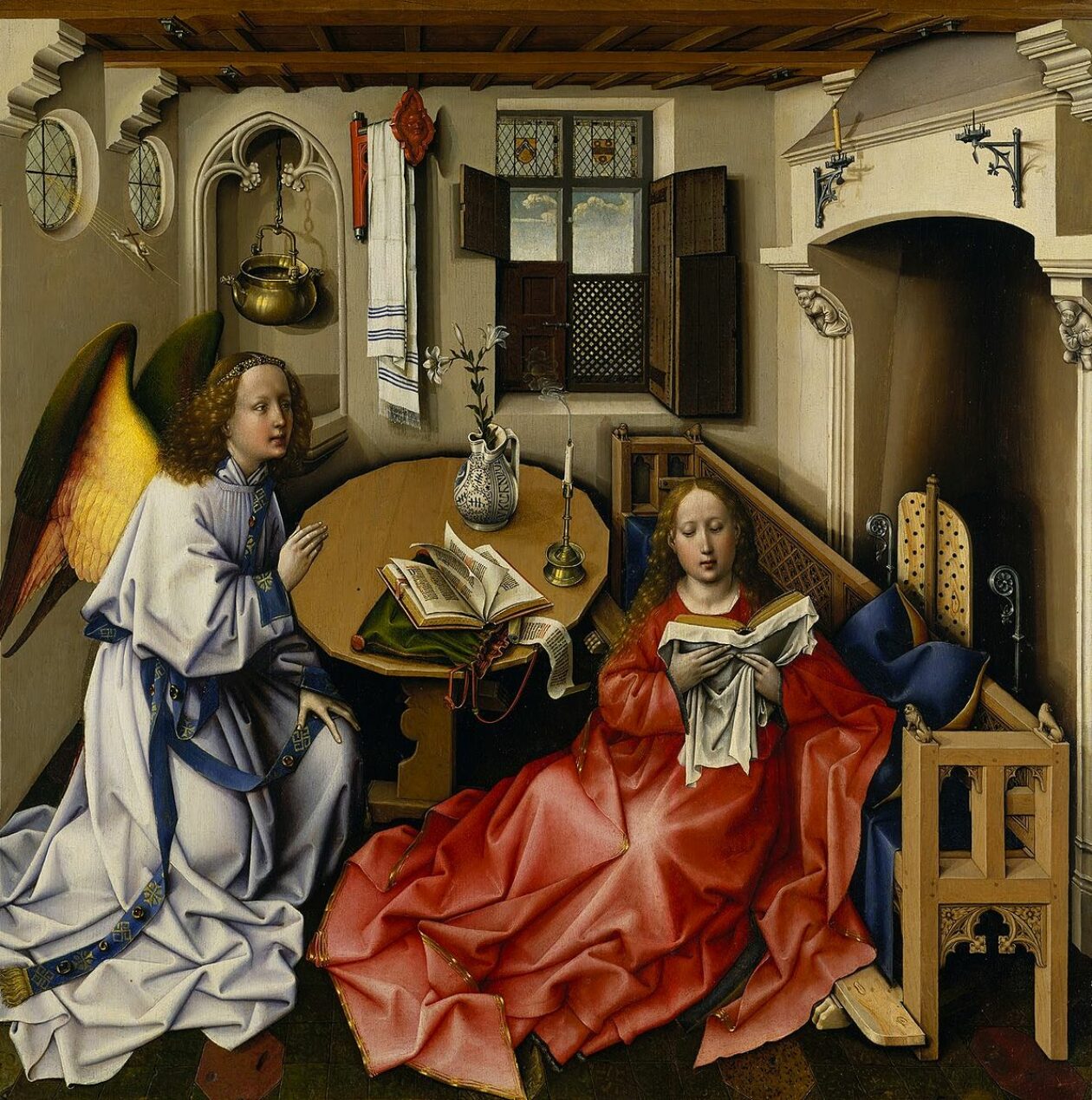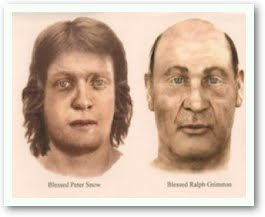In 1845, two skulls (Peter Snow and Ralph Grimston) were discovered under the stone floor of the ancient chapel of Hazlewood Castle, near Tadcaster, UK.
Father Snow and Ralph Grimston were captured while journeying together to York. Father Snow was condemned to death by hanging, drawing, and quartering for being a priest. Ralph Grimston had previously been imprisoned for opening his home to priests. Ralph Grimston was condemned to death by hanging for having assisted Father Snow and for having attempted to prevent the priest’s arrest when they were caught.
The Catholic Cathedral at Leeds, dedicated to St. Anne, has their skulls as relics, installed there when the new altar was consecrated. And, the University of Dundee reconstructed their faces based on their skulls.
Nov 22, 2009, -Rev. Robert Barron, Cardinal Francis George Professor of Faith & Culture, University of St Mary of the Lake, Mundelein Seminary, IL & Founder, Word on Fire.
“…Bishop Roach took me to the far more modest cathedral of Leeds, led me to the main altar and then invited me to examine a treasure.
We crouched down and the bishop pulled out two heavy stones from the front of the altar, revealing a pair of well-preserved human skulls. These, he explained, were the remains of Blessed Peter Snow and Blessed Ralph Grimston.
Peter Snow was a Yorkshireman who had left Elizabethean England in order to study for the Catholic priesthood in France. At the time, of course, it was an offense to be a Catholic and a capital crime to be a priest. Snow had been ordained in Reims and subsequently smuggled into England, where he successfully ministered for two or three years, clandestinely celebrating the Mass, encouraging Catholics in their faith and instructing children in their catechism.
Like many other priests in England at that time, he was protected by Catholic families who hid him away in cellars, attics and hiding-holes concealed behind walls. In May of 1598, he was making his way to York in the company of Ralph Grimston, a layman who was travelling with him for protection. The two Catholics were waylaid by authorities. Grimston drew his sword and shouted at the young priest to ride off, but they were captured.
A trial was held in York, and Snow was convicted of being a priest and Grimston of harboring an enemy of the state. On June 15, they were executed. Grimston was hanged and then beheaded; Snow suffered the far worse fate of being hanged, slowly eviscerated and then cut into four pieces. Afterward, their heads were placed on pikes over the gate of the city in order to dissuade any who might be tempted to imitate them.
The heads were taken down and for many centuries were hidden away, eventually coming to rest at a Carmelite monastery. When that monastery was sold, Bishop Roach, who knew of the existence of the skulls, asked that they be transferred to the Leeds cathedral and placed in the new altar.
Before they were ensconced in the altar, the bishop allowed them to be examined by a forensic scientist in London who was able to reconstruct facsimiles of the faces, letting us see, after all of these centuries, what these men looked like. When I saw the photographs, I was deeply moved, especially by the face of the young priest (only 32 when he was killed). He looked for all the world like one of the students that I teach at the seminary.
It just broke my heart to think that this courageous kid could have been treated with such brutality and inhumanity, simply for saying Mass and administering the sacraments. I mused on the depths of human cruelty, on a wickedness that beggars the imagination and is, nevertheless, on full display up and down the centuries to the present day.
But above all, I found myself edified by his witness. During his years of study in France, he knew that he was preparing for a desperately dangerous mission. He was fully aware that many of his colleagues had already been arrested or killed, and yet he persevered.
His ministry in his home country was grim, haunted, and fearsome. How many terrible days and nights he must have endured, and yet he pressed on. Looking at his placid face, I thought about the transforming quality of God’s amazing grace, what God’s love can do with our frail and deeply compromised humanity.
Part of the genius of Catholic theology is that it clearly articulates both sides of the human condition. There is nothing naïve or blandly “optimistic” in Catholic anthropology. It takes original sin and its consequences with utter seriousness, arguing that human beings are weakened, twisted even, in both body and soul.
No moral outrage — Auschwitz, Hiroshima, the Cambodian killing fields or Elizabethan totalitarianism — really surprises the Catholic mind, for as Chesterton said, “we’re all in the same boat and we’re all seasick.” At the same time, Catholic teaching holds that we are made in the image and likeness of God and destined, ultimately, to share in the very dynamics of the divine life, loving as effortlessly and radically as God himself. This Catholic hope outstrips even the fondest dreams of any humanist philosophy.
Those two skulls in the altar at Leeds silently speak of the best and the worst in us human beings. Peter Snow and Ralph Grimston, pray for us.”
Father Snow, Holy Priest! Ralph Grimston, Defender of Priests! Ora pro nobis!
Love,
Matthew
http://www.wordonfire.org/WoF-Blog/WoF-Blog/September-2010/Spirituality-Two-English-Martyrs.aspx

